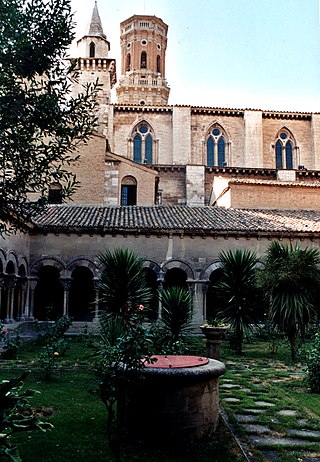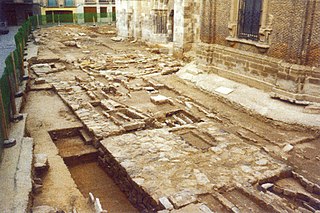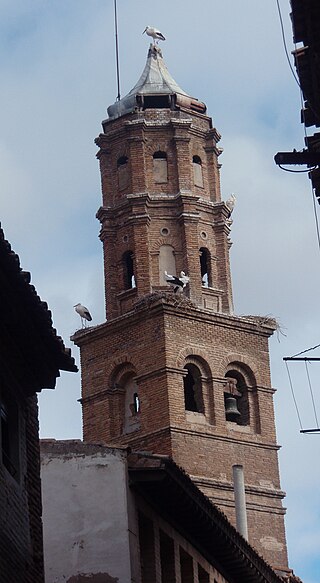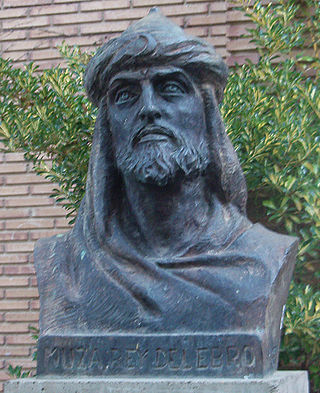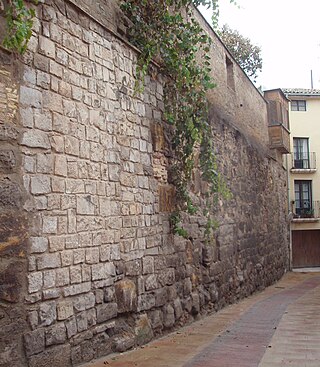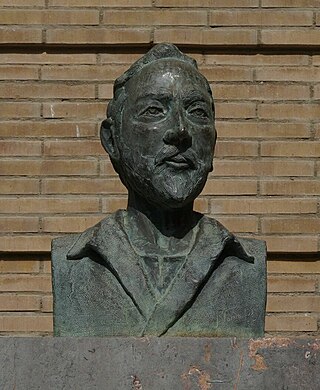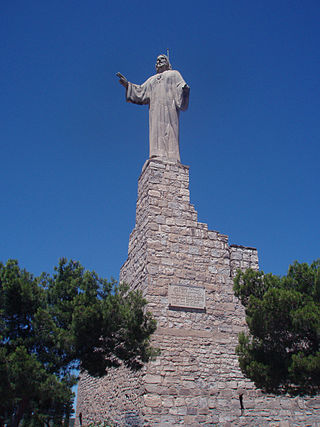Self-guided Sightseeing Tour #1 in Tudela, Spain
Legend
Tour Facts
1.9 km
30 m
Experience Tudela in Spain in a whole new way with our free self-guided sightseeing tour. This site not only offers you practical information and insider tips, but also a rich variety of activities and sights you shouldn't miss. Whether you love art and culture, want to explore historical sites or simply want to experience the vibrant atmosphere of a lively city - you'll find everything you need for your personal adventure here.
Individual Sights in TudelaSight 1: Puente del Ebro
The Ebro Bridge in Tudela (Navarre) is a medieval Spanish stone bridge, with a length of 360 m that is composed of 16 piers and 17 arches, all uneven. Its importance is intrinsic to the city, whose history is articulated around the passage of the Ebro River.
Sight 2: Iglesia de la Magdalena
Santa María Magdalena is one of a number of medieval Roman Catholic churches in Tudela, region of Navarre, Spain. It is a Romanesque style building.
Sight 3: Catedral de Santa María
The Cathedral of Santa María de Tudela (Navarre) is a late Romanesque temple, inspired by Cistercian architecture, of large dimensions, which began to be built at the end of the twelfth century during the reign of Sancho VI the Wise, passing the baton to his son Sancho VII the Strong, who in turn passed it on to his nephew Theobald I. He used some of the foundations of the Great Mosque of Tudela. As the orientations of the two temples did not coincide, the mosque was demolished to build the new temple and only some of its foundations were used.
Sight 4: Restos de la mezquita
The main mosque of Tudela was the aljama mosque of the city of Tudela (Navarre), during the Muslim period. It was built in the middle of the ninth century under the initiative of Musa ibn Musa.
Sight 5: Iglesia de San Nicolás de Bari
The church of San Nicolás de Bari in Tudela (Navarre) was one of the most outstanding Romanesque temples in the city, whose existence dates back to the first half of the twelfth century. It was rebuilt in the eighteenth century with its current baroque factory. It is located between San Nicolás and Serralta streets in the Old Town of Tudela. Sancho VII the Strong was buried here, although two years later he was permanently transferred to Roncesvalles.
Sight 6: Busto de Muza
Musa ibn Musa al-Qasawi (Arabic: موسى بن موسى القسوي) also nicknamed the Great ; died 26 September 862) was leader of the Muwallad Banu Qasi clan and ruler of a semi-autonomous principality in the upper Ebro valley in northern Iberia in the 9th century.
Sight 7: Murallas - S. IX
The walls of Tudela were the fortification, of Muslim origin, which defensively surrounded the city of Tudela (Navarra), along the perimeter that now makes up the old town of the city. A first wall was built at the beginning of the ninth century, with the fortification of Amrùs Ben Yusuf, which surrounded a first enclosure, the founding. This first wall reached the Midovilla ravine, which initially served as a natural defensive pit. With demographic growth, especially at the time of the Banu Qasi, this wall was extended during the first half of the ninth century until reaching the following natural pit, the Queiles River. This corresponds to the main wall of Medina Tudelana, which was preserved intact until the 16th century. After the reconquest of Tudela in 1119, the Moors were transferred to extramurous, building a new neighborhood subsequently known as La Morería; This new neighborhood was immediately protected by a new fortification: the walls of the Morería.
Sight 8: Monumento a Benjamìn de Tudela
Benjamin of Tudela, also known as Benjamin ben Jonah, was a medieval Jewish traveler who visited Europe, Asia, and Africa in the twelfth century. His vivid descriptions of western Asia preceded those of Marco Polo by a hundred years. With his broad education and vast knowledge of languages, Benjamin of Tudela is a major figure in medieval geography and Jewish history.
Sight 9: Mirador del Cerro del Castillo
The monument to the Sacred Heart of Jesus of Tudela (Navarra) in Spain, is a great statue built in honor of Jesus of Nazareth, «erected as a spiritual lighthouse on the top of the Cerro del Castillo, from which its protection extends to the protection of the city and the entire region ». The image of the heart of Jesus is a fundamental piece of the silhouette of the city. It was located on what was the main tower of the old castle of Tudela and, subsequently, Hermitage of Santa Barbara. The heart of Jesus has its counterpoint on the other side of the city with the statue dedicated to the heart of Mary.
Sight 10: Ermita de la Virgen de la Cabeza
The hermitage of Nuestra Señora de la Cabeza is a hermitage located in the Navarrese municipality of Tudela. It is located on Calle de la Virgen de la Cabeza. Current building in the nineteenth century. It was built in the seventeenth century. replacing what was built in the nineteenth century. It is consecrated to the Virgin of the Head, of the same name.
Share
How likely are you to recommend us?
Disclaimer Please be aware of your surroundings and do not enter private property. We are not liable for any damages that occur during the tours.
GPX-Download For navigation apps and GPS devices you can download the tour as a GPX file.

